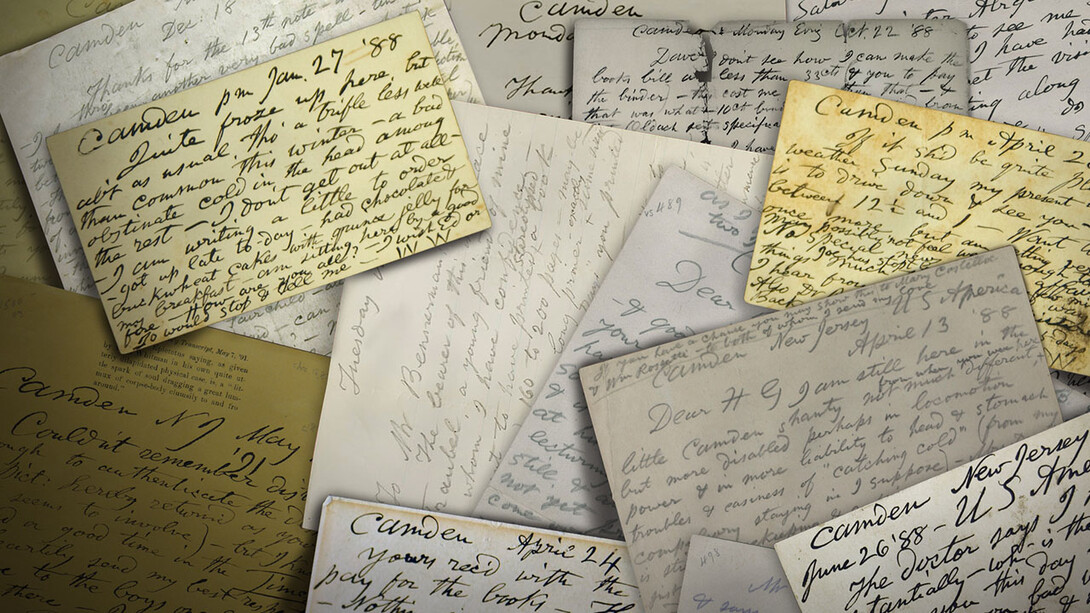
“Fair day — all quiet — Dr. Walsh call’d — I sit here in the big chair hour after hour — hardly a noise or movement appears to disturb the day — Peace be with you all too — WW”
On Dec. 23, 1888, Walt Whitman sat in a large chair — something he’d been doing a lot since suffering a paralytic stroke and subsequent illness — and wrote a quick holiday greeting to his friend, Richard Maurice Bucke.
Whitman wrote and received thousands of letters, corresponding often with friends like Bucke, family, fans, and to take care of the day-to-day business of publication of his literary works.
Thanks to an ongoing joint project of two Big Ten schools, the University of Nebraska-Lincoln and the University of Iowa, much of Whitman’s correspondence has been digitized and transcribed so fans and scholars of his work can get a glimpse of his daily life, and read musings on his life, work and historic events, including the Civil War and Reconstruction.

The letters, both mundane and fascinating, are continuously being added to the Walt Whitman Archive. Another group of 252 letters was added in September by Iowa. The latest batch comes from the few years preceding Whitman’s death in 1892, and chronicles his failing health, impending death and the publication of his final volumes of “Leaves of Grass.”
The Whitman Archive, a project hosted by the Center for Digital Research in the Humanities at Nebraska, has published 3,431 of the 6,275 pieces of correspondence currently known to exist.
Before being added to the digital repository, letters are scanned, transcribed and annotated by researchers so scholars and casual readers alike can fit each letter into the larger story of Whitman’s life. It is the first project to edit and include letters sent to Whitman as well.
“The Whitman Archive is freely available so students at all levels and interested people around the world can access this material,” said Kenneth Price, Hillegass Professor of English and co-director of the archive. “Whitman is a cultural icon, so there is a great deal of interest in both his writings and his life. These letters shed light on both.”
And, unlike a print edition of letters, the digital project seamlessly incorporates new discoveries, of which there are many.
“Previously unpublished letters pop up with surprising frequency,” Price said. “We’ve even seen a Whitman letter pop up on PBS’s ‘Antiques Roadshow.’ In the future, no doubt other letters will be found in attics, barns, the pages of old books, and in vast repositories like the National Archives.”
The research and publication of letters has been ongoing for a decade, and has been continually supported by the National Historical Publications and Records Commission. Price credits this steady funding to the quality of the work produced by the Whitman team at Nebraska, including research assistant professor Nicole Gray and postdoctoral research associate Caterina Bernardini, and their counterparts at Iowa.
Price said the funding was renewed again in August and that he expects the bulk of the research and publication of Whitman’s letters will continue for another five years.







